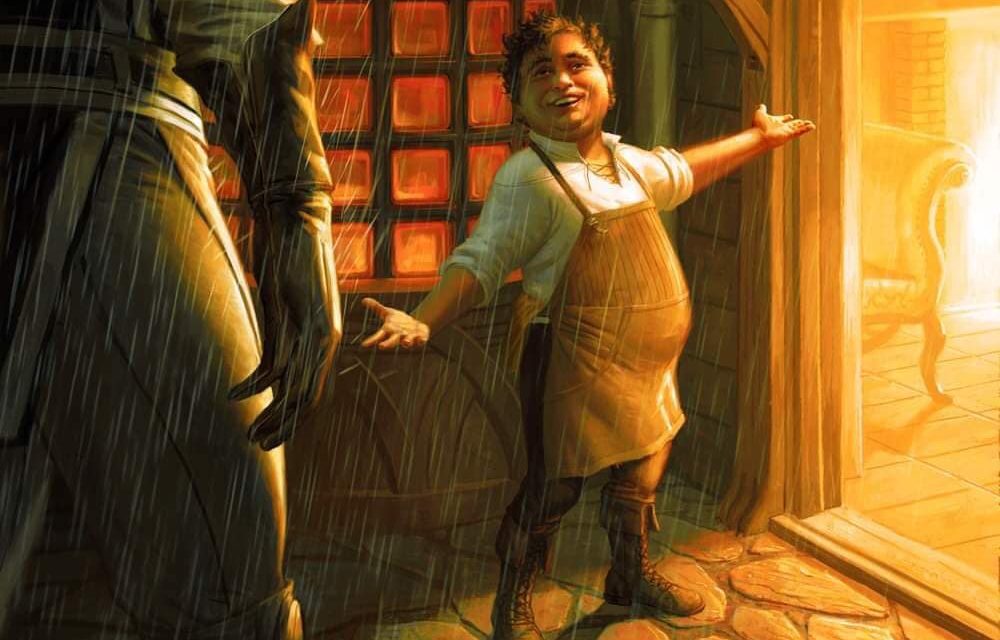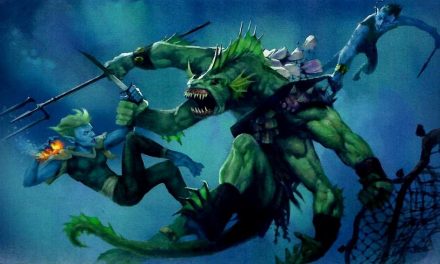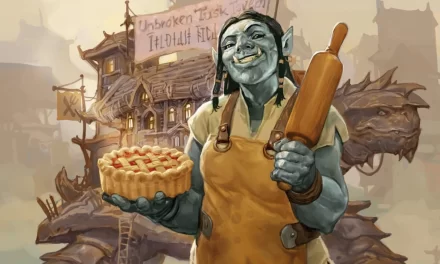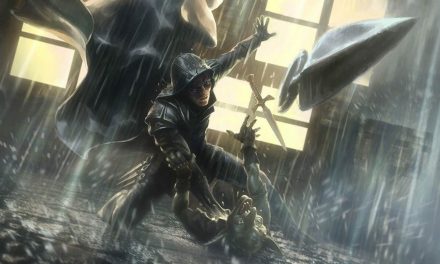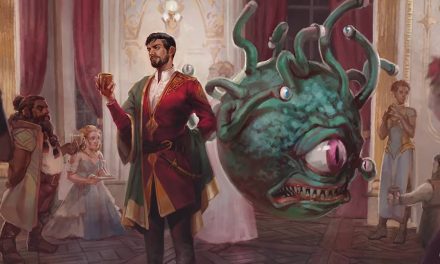In my experience, exhaustion is one of the most misunderstood and underused mechanics in D&D 5e.
After all, it’s not always the terrifying monsters or insidious traps that you have to be worried about. Pushing yourself too far for too long can potentially spell the end for a character too!
But I’m a fan of this mechanic. It presents interesting obstacles and challenges to the party that they otherwise might miss.
Slowly but surely wearing them down, exhaustion can make even a “weak” encounter much more dangerous when party members aren’t necessarily fighting at 100%.
So today we’re covering the exhaustion mechanic in D&D 5e!
What is Exhaustion in D&D 5e
Exhaustion is a special condition in D&D 5e and there are several ways that it can come into play.
The most common situations are those that see characters having to push themselves beyond their limits. Things like starvation, extreme weather, or choosing not to sleep are but a few examples of this.
We’ll go over the causes in more detail in just a bit.
As characters gain more levels of exhaustion, they begin facing some steep negative effects. They won’t be able to move as fast, won’t be able to take as much damage, and will struggle both physically and mentally.
At the extreme end, a character can even die from exhaustion!
As I mentioned at the beginning of this article, this is a mechanic that gets ignored all too often. However, it’s a powerful tool to be aware of if you’re a DM that is wanting to add more realism and grit to your game.
Sure, it’s already dangerous to be bushwhacking through an uncharted jungle filled with dangerous flora and fauna like Tomb of Annihilation. But those wearing heavy metallic armor will find themselves getting cooked if they don’t take care!
Now there are clear reasons to introduce a survival element to the game where things like fresh water become much more important than they might have been otherwise!
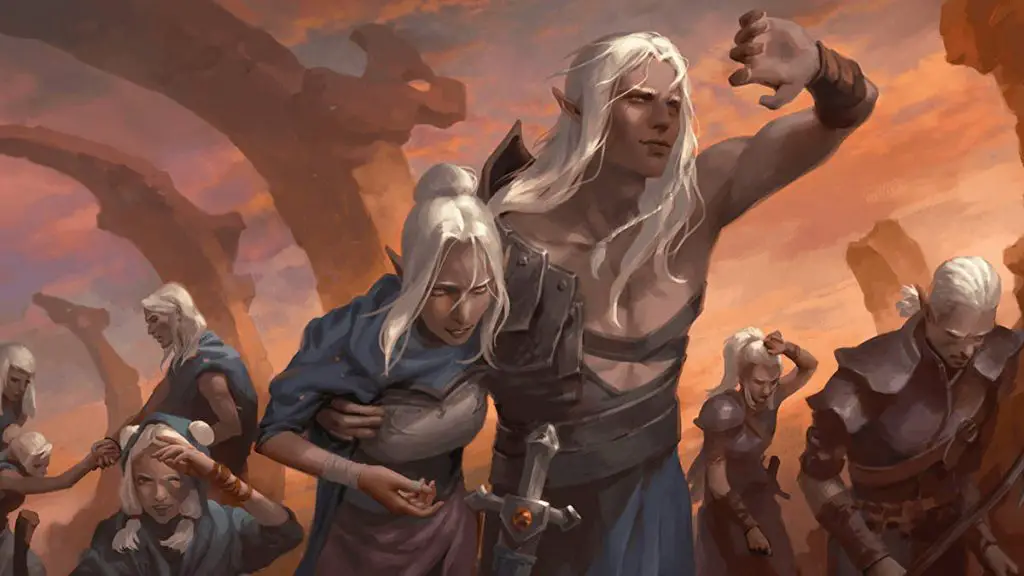
Rules for Exhaustion in D&D 5e
Let’s look at the specific rules for exhaustion in D&D 5e now.
As I mentioned, characters gain levels of exhaustion. Each level has its own negative effect on the character and these effects get more severe with each additional level.
There are six levels of exhaustion in D&D 5e in total.
Not all effects will add only a single level. Some might wear a character down level by level over time while others might inflict crushing exhaustion on the character.
Additionally, exhaustion levels are cumulative. When a character gains a level of exhaustion, they suffer the negative effects of their new exhaustion level and all of those under it.
| Exhaustion Level | Effect |
| 1 | Disadvantage on all ability checks |
| 2 | Speed is halved |
| 3 | Disadvantage on attack rolls and saving throws |
| 4 | Hit point maximum is halved |
| 5 | Speed reduced to 0 |
| 6 | Death |
It adds up quickly, huh?
Before we talk about what causes exhaustion, let’s look at each exhaustion level in more detail. Most of these effects seem small until you realize just how much they affect!
Exhaustion Level 1
The first level of exhaustion is rough, but it’s not as steep of a penalty as what is yet to come.
You should still be okay in combat since this won’t be affecting your attack rolls or saving throws.
However, things like grappling enemies or trying to hide (like a Rogue trying to get in position for a Sneak Attack) will be much more difficult.
Keep in mind that rolling initiative is an ability check. That means you’re going to be rolling initiative at a disadvantage if you have even one level of exhaustion!
Exhaustion Level 2
Once you’ve gained a second level of exhaustion, it starts to get much tougher.
Only having half of your speed is rough, especially for characters that are meant to stand on the frontlines in combat. Enemies that tend to move quickly will be a much bigger problem.
Spellcasters or characters who favor ranged combat won’t have quite as hard of a time with this. Unless things get rough and they need to make a run for it, anyways.
Note that this is halving your total movement speed. If you also have something like flying or swimming speed, those are penalized as well.
You can check out my article covering movement in D&D 5e to learn more.
Exhaustion Level 3
Level 3 is where most people begin to panic when it comes to exhaustion. For good reason too!
Having disadvantage on both your attack rolls and saving throws is a very intense penalty. Not only are you going to have a much harder time hitting enemies, but your odds of not taking a fireball to the face or not getting mind-controlled by an enemy just took a major hit.
At level 3, there’s simply no hiding how exhausted your character is. They’re moving sluggishly, are probably breathing very heavily, and likely have a dazed look on their face.
It’s not unreasonable to expect enemies to focus on a character who is showing this level of exhaustion.
If someone in your party is at this level of exhaustion, you want to make sure that you’re defending them. Otherwise, they will have a very difficult time fighting back against enemies that want to strike at such a weakened character!
And just to give you another reason to be scared…
Keep in mind that death saving throws will also be penalized by this. If there is any roll in D&D 5e that you don’t want disadvantage on, it’s these.
Whatever you do, don’t get knocked unconscious!
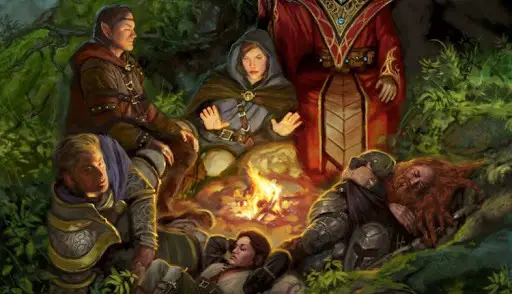
Exhaustion Level 4
At four levels of exhaustion, a character loses a large amount of their vitality.
They are likely on the verge of collapsing under their own weight and it’s taking everything within them to be able to move.
Where the previous levels of exhaustion were more like being foggy-brained with slow reaction times, this is more like a character being on their last leg before just collapsing.
The character isn’t totally a sitting duck for any enemies that want to attack. They can still fight back, but the previous exhaustion levels’ effects will make that difficult.
Mix in the fact that they’ve only got half of their hit points and things can go very badly very quickly if they don’t get some rest soon!
Exhaustion Level 5
When you reach five levels of exhaustion, your character can no longer move. It’s as if their own body is crushing down on them.
A character can stand when they’re at this level of exhaustion, but that’s about all they can do. Even then, they’ll only be able to do that much with assistance!
If an enemy comes in range, they can swing their weapon or whatnot (at disadvantage) but they’re effectively helpless otherwise.
Once a character reaches level five exhaustion, they’ll need their allies to carry them if they plan on moving at all.
Exhaustion Level 6
At six levels of exhaustion, a character dies.
There are no saving throws here. The character’s soul has shed its mortal coil.
Unless the character is brought back to life with a spell like Raise Dead or Revivify, this is the end of their story.
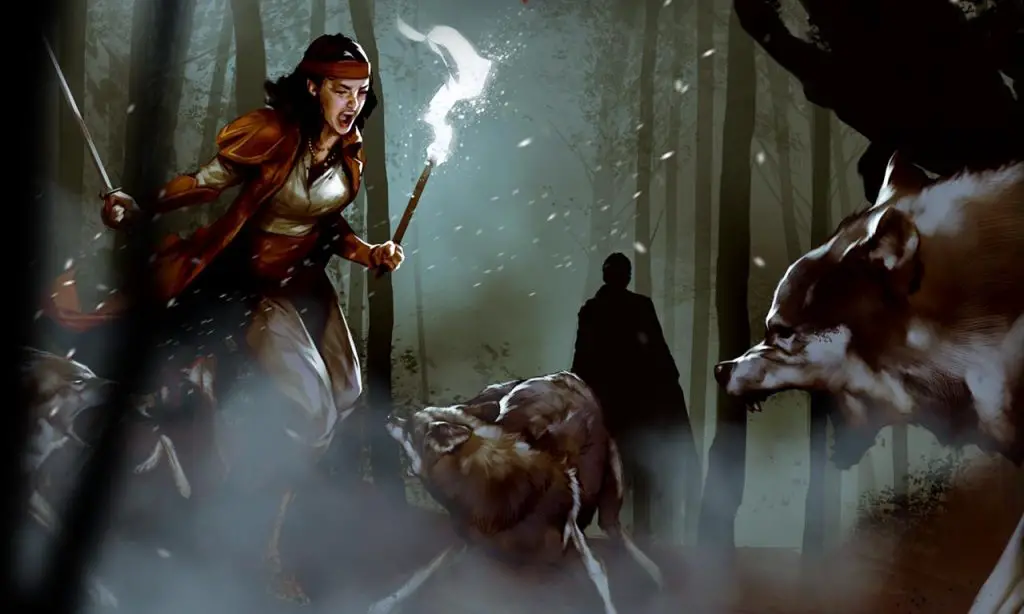
What Causes Exhaustion in D&D 5e?
The main causes of exhaustion in D&D 5e have to do with traveling and characters overexerting themselves.
While there isn’t a single comprehensive list of official situations and conditions that cause exhaustion, there is enough available to help DMs make informed decisions.
You can see these in the table below.
| Cause | Effect |
| 24 hours without a long rest | +1 level of exhaustion |
| Traveling longer than 8 hours (Forced March) | Constitution save for each hour beyond 8, DC = 10 + 1 for each hour beyond 8, +1 level of exhaustion on a failure |
| Not eating one pound of food | After 3 + (Constitution modifier) days, +1 level of exhaustion per day without food |
| Not drinking one gallon of water | +1 level of exhaustion or failing a DC 15 Constitution save (if drinking a half gallon), +2 levels if already exhausted |
| Extreme heat | Constitution save per hour, DC 5 for the first hour, +1 DC for each additional hour, disadvantage if wearing medium/heavy armor, +1 exhaustion on a fail, auto-success if staying hydrated or resistant/immune to fire damage |
| Extreme cold | DC 10 Constitution save per hour, +1 exhaustion on a fail, auto-success if wearing cold weather gear or immune/resistant to cold damage |
Those are going to be the most common causes of exhaustion that adventurers face. Even if we’re looking at spells or other effects, it tends to be a somewhat rare mechanic.
Only a handful of monsters can cause exhaustion and, even then, they’re typically very high CR creatures that are typically encountered as “boss” monsters where they appear.
This includes enemies like the Gingwatzim from Candlekeep Mysteries, the Soul Monger from Tomb of Annihilation, and the Sibriex from Monsters of the Multiverse.
Likewise, the Sickening Radiance spell is the only one to look out for (right now anyways) that causes exhaustion.
Berserker Barbarians will particularly want to be mindful of the effects of exhaustion. Their Frenzy feature enhances their Rage but causes them to gain one level of exhaustion when it ends!
Homebrew Rule – Resurrection Causes Exhaustion
A few years back, my group started using a homebrew rule that involved exhaustion. In discussions online, it seems like this is a rule that has gained a lot of popularity for the same reasons we started using it.
The rule itself is pretty straightforward. When a character is brought back to life, they come back with one level of exhaustion.
It’s a quick and elegant solution to a problem that many have noticed.
The fact is that it doesn’t take very long in D&D 5e for death to simply feel like a minor inconvenience. Especially if the party has a Cleric, Druid, or another caster with spells that can bring characters back to life, it can make moments lose their punch.
Sure, Bjorn the Barbarian just got blown to bits by that particularly angry Flameskull. But he’ll be back on his feet in no time at all and we can continue navigating the dungeon!
Being brought back to life is much better than the alternative, but this homebrew rule balances things out a bit better, in my opinion.
After all, I think it makes sense that someone wouldn’t necessarily feel at 100% after, you know, dying…
If someone died at five or six levels of exhaustion, their soul is simply ready to rest and won’t return to the body.
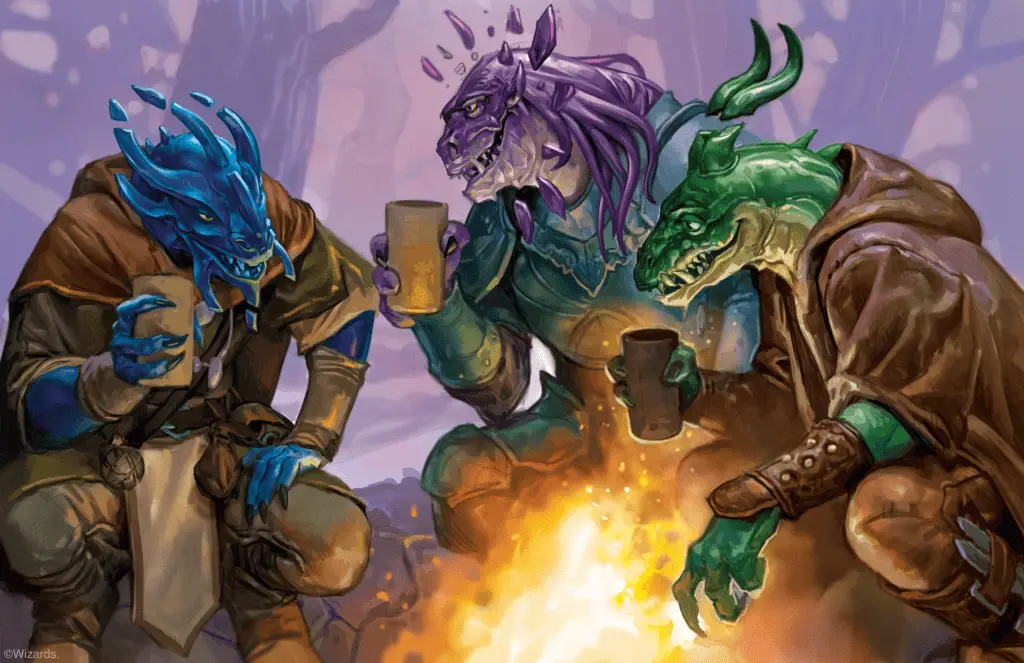
Removing Exhaustion in D&D 5e
Depending on how many levels of exhaustion a character has, it might be a silent annoyance or a silent killer. Fortunately, you’ve got some reliable ways of getting rid of those pesky exhaustion levels!
The easiest way to reduce your exhaustion level is to take a long rest.
As long as you’ve got food and water during the long rest, you’ll be much better after a meal and a good night’s sleep!
Each long rest removes one level of exhaustion, and you can only take one long rest per day. So, if a character is at five levels of exhaustion, expect them to be taking it easy and recovering for nearly a week!
But sometimes you don’t have that kind of time.
Someone in the party should always have Greater Restoration handy and this is a prime reason why. It can save time and lives in a pinch!
Granted, using a level 5 spell to remove one level of exhaustion is expensive but it’s also quick. If you’ve got more resources (spell slots and materials) than time, it’s worth it.
But what about the extreme option?
While incredibly rare, you may have stumbled across a Potion of Vitality. If a character is at four or five levels of exhaustion, you should absolutely use this on them to remove all their exhaustion levels.
While it’s an extreme situation, that’s also exactly what it’s there for!
Resurrection and Removing Exhaustion
Contrary to the homebrew rule I mentioned earlier, let’s look at the effect of resurrection on exhaustion according to the official rules.
If you revive a character, they come back to life with their exhaustion level reduced by 1. This was addressed in the November 2018 errata.
So, if they died from six levels of exhaustion, they would come back at 5 levels.
If you really want to be cheeky, one could make the argument that using a level 3 spell (revivify) to bring a character back with one less level of exhaustion is a better option that using a level 5 spell (greater restoration) to do the same.
For starters, though, that’s an awful lot of diamonds that you’d need to be carrying around for the spell’s material component.
But let’s say that you’ve got a big bag of diamonds or that the character you’re resurrecting is a Zealot Barbarian which means the material components aren’t needed…
I see absolutely no reason why a character would stay with a party that has repeatedly murdered them and brought them back to life.
Who cares about how utilitarian or efficient it is at that point?
It’s up to the DM what prompts a roll on the Long-Term Madness table, but I absolutely think this is worth a couple!
I mean, that’s if their soul even wants to come back at that point.
Personally, I’d be like “nah, I’m good with not dying over and over again.”
While I’ve never had a party try to murder an ally back to good health, it is part of why I use the homebrew rule I mentioned earlier!
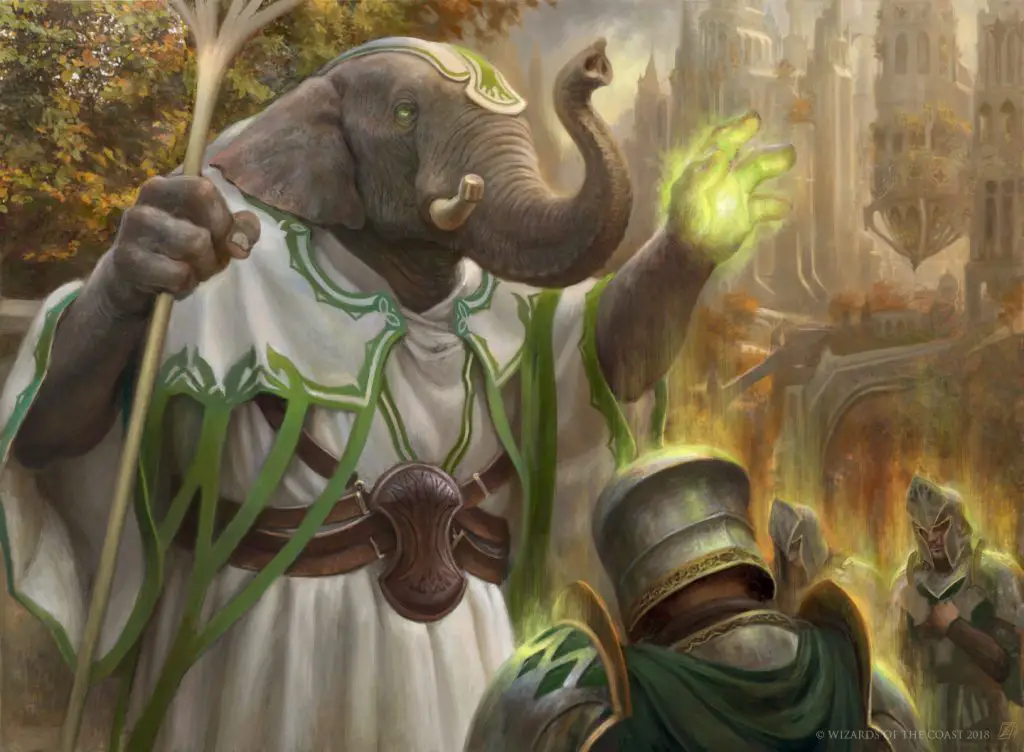
FAQs – Exhaustion in D&D 5e
Before we wrap this up, I wanted to answer some specific questions about exhaustion that come up with some regularity.
If you have any questions that I haven’t covered, feel free to reach out in the comments!
Do Short Rests Get Rid of Exhaustion?
If you’re wanting to sleep the exhaustion off, your exhaustion level can only be reduced by taking a long rest.
Rangers are a potential exception to this, though.
In Tasha’s Cauldron of Everything, there is an optional feature for Rangers at level 10 called Tireless. Among other things, it allows Rangers to reduce their exhaustion level by 1 on a short rest.
Does Exhaustion Affect Saving Throws?
Once you a character has gained three levels of exhaustion, they will have disadvantage on saving throws as well as attack rolls and ability checks.
If you have reached this level of exhaustion, you should absolutely play it very safe until you can find a place to set up camp and take a long rest!
Does Exhaustion Affect Initiative Rolls?
Because initiative rolls are an ability check, they are rolled at disadvantage if you have at least one level of exhaustion.
If you’ve been trudging through extreme weather or just pulled an all-nighter, you aren’t going to be as quick on your feet!
Recommended: Initiative in D&D 5e Explained
Are Warforged Immune to Exhaustion?
Warforged are not immune to exhaustion. While they do not sleep like most other humanoids, they do have to go into an inactive state for 6 hours as a long rest.
Prior to the official release of Eberron: Rising From the Last War, Warforged did have a different feature in Wayfinder’s Guide to Eberron.
This stated that Warforged didn’t suffer the effects of exhaustion specifically due to a lack of rest. However, other things that might cause exhaustion would affect them normally.
Personally, I prefer the Warforged in RFtLW, but some groups might use Wayfinder’s Guide and it’s an important nuance to be aware of.
Are There Saves Against Exhaustion?
It depends on the situation. Sometimes there will be saves (like when dealing with extreme weather) but other times there won’t (like when doing a Forced March).
Your DM will ask you to make a save if one applies.
Conclusion – Exhaustion in D&D 5e Explained
Whew!
Speaking of exhaustion, that’s a wrap for this article!
As I’ve been running more games that are about exploration of uncharted lands, exhaustion has been coming into play more than when running more “standard” adventures.
It’s that extra challenge that makes the need to keep track of resources and survive the environment itself all the more important.
Sure, it’s scary to encounter some huge, hungry monster while you’re trekking through the jungle. But it’s a whole new level of fear once the jungle’s humidity and biting insects have started to wear you down!
I hope you’ve found this guide helpful. If you have any questions about exhaustion in D&D 5e or fun ideas/stories about it from your own games, let’s chat in the comments!
Want all the latest player guides, DM tips, news, reviews, and more for D&D 5e? Sign up for the Tabletop Joab newsletter below!
You can also follow me on Facebook and Twitter!
If you found this article helpful and want to support the site, you can buy me a coffee here! (It’s not expected, but very appreciated!)

